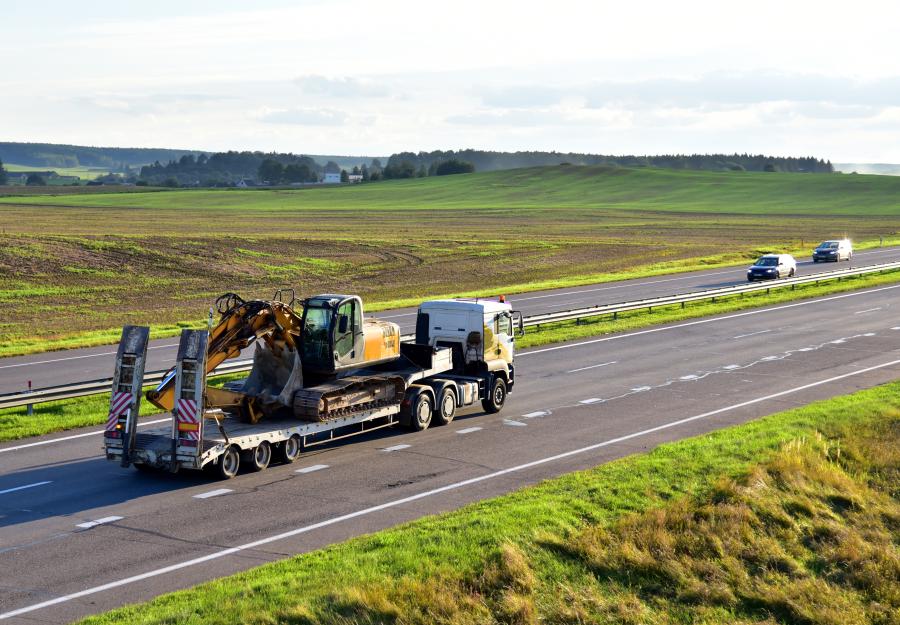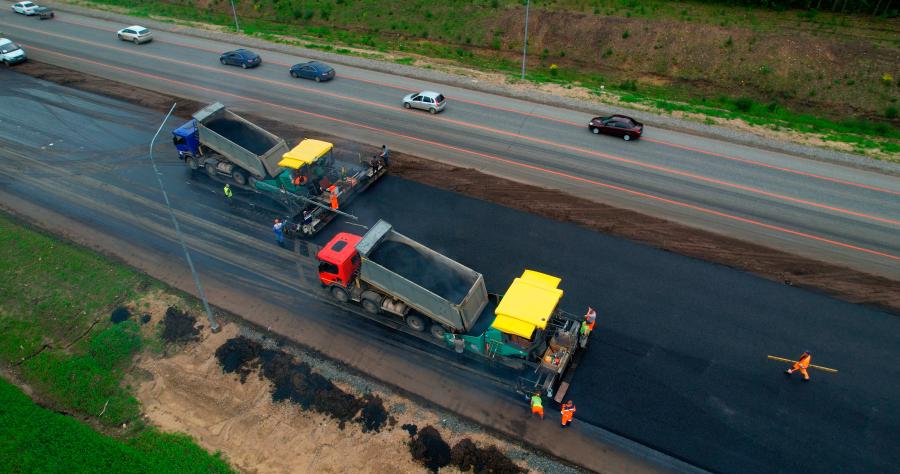Excessive speeding burns the most fuel. Simply paying attention to the road and the speedometer can alleviate that issue.
Contractors know diesel fuel costs can kill the bottom line. Fleet operational budgets take a hit when business owners are hit with changes in supply and demand, seasonal fuel usage, transportation costs and unexpected operational costs. Simple changes in vehicle maintenance, safe driving practices and fuel fraud prevention can save significant amounts on your fleet fueling costs.
"In 2022, the cost of operating a commercial vehicle surpassed $2 per mile for the first time," said Hemant Banavar, head of financial products of Motive.
He attributed that number to high fuel costs saying fuel makes up approximately 40 percent of a commercial fleet's total operating budget.
"And though fuel costs have dipped since last year's record high, fuel continues to be a top expense for commercial transportation businesses."
The trucking industry in the United States spends more than $100 billion on diesel fuel annually, reports Adam Rowe of Tech.co.
He said that after labor, that amount represents the second biggest expense that motor carriers face.
"That's as much as 20 percent of total operating costs," said Rowe. "Saving on fuel is essential for every driver or fleet manager looking to cut costs."
This is particularly true during a global pandemic, when every dollar counts, he added.
Did you know transportation costs usually increase based on the distance between retail location and supply source? Areas farthest from the Gulf Coast, where about half the U.S. diesel supply is produced, tend to have higher prices, according to Banavar. Though those factors are out of the contractor's hands, it's good to keep in mind when figuring up the fuel budget.
Banavar said that the retail price of diesel fuel also reflects both local market conditions and the location of retail outlets.
"Refiners own and operate some retail outlets, while other outlets are independent businesses that purchase diesel wholesale."
As a result, the cost of doing business can vary dramatically depending on a dealer's location, he said.
"High-volume fueling stations that service large commercial vehicles tend to sell diesel at lower prices than smaller-volume service stations."
Making Simple Changes
Rowe preaches that some changes have a bigger impact on fuel costs than others. He believes more than any other driving habit, simply slowing down conserves fuel.
"Excessive speeding burns the most fuel," said Rowe, citing the ATA. "A truck driving 75 mpg consumes 27 percent more fuel than one driving 65 mph."
He said the trucking association's estimates find that capping truck speed at 65 mph would bank the industry another near 3 billion gallons of diesel.
"Speeding can be easily avoided, too, by simply paying attention to the speedometer," said Rowe. "If you're concerned drivers won't follow the set speed limits, you can monitor vehicle speeds with a GPS-equipped fleet management system [FMS]."
It's an eye-opener to some drivers to learn how small a difference in speed to save time actually makes, he added.
"Over a distance of 100 miles, a vehicle will only save a maximum of 12 minutes by going at 75 mph instead of 65 mph. It's not worth the extra cost or risk."
After speeding, frequently hitting the brakes and accelerating are two factors that waste fuel. Howe suggested contractors think about the stop-start driving vehicles suffer through when a driver speeds up only to slow back down immediately in traffic.
Oak Ridge National Lab researchers found that fuel economy in light-duty gas vehicles could be improved by 15 to 30 percent by curbing aggressive driving.
"The U.S. Department of Energy used that study as a jumping-off point to estimate that dollar savings could be between $.26 and $1.06 per gallon used."
Rowe said a heavy-duty truck wouldn't see the exact results, and it's unrealistic to assume harsh driving habits can be curbed.
"A more conservative estimate (is) 5 to 10 percent reduced fuel use through ceasing to brake and accelerate harshly, or 20 percent less fuel for aggressive cases," he said.
One clear takeaway in Rowe's opinion: "Aggressive driving is one of the biggest fuel burning practices out there."
Idling ranks up there too, though. A heavy-duty truck at idle burns almost a gallon of fuel hourly — higher than the near half-gallon a car burns. The larger engine size consumes more fuel. "Idling adds up fast," said Rowe, "particularly when truckers idle at rest stops for hours on end."
But idling also bumps up emissions and engine wear. These factors lead to extra maintenance costs for the fleet vehicle. Rowe suggests implementing reduced idling time via company-wide shift in policy. Enforce it through an FMS that logs idle times and notifies managers, he suggests.
An automatic engine start/stop system (AESS) is another option, he said. The system starts and stops the engine to keep cab temperatures reasonable. Such technology reduces cab temps as it reduces idle times, said Rowe.
"These systems are fairly inexpensive to install," he added.
But Rowe noted an Alternative Fuels Data Center report found it offers only minimal savings in extreme weather, "so may not be worth the trouble."
A strict vehicle maintenance program can improve fuel efficiency. Rowe said an engine tune-up might boost diesel economy.
Common sense tells a fleet manager that a vehicle in bad condition requires better maintenance if you want to keep it running at optimal level, he added.
Better fuel economy is one benefit. "Change your oil frequently and don't forget about changing the filters — one task commonly overlooked" in diesel trucks.
Inflate those tires for better diesel economy. Under-inflated tires under-perform, according to Rowe. The NHTSA advises there's a 0.2 percent drop in gas mileage for every 1 psi lower than the recommended pressure.
"If your tires averaged 10 psi too low before you topped them, you'll tighten your fuel use by 2 percent when your tires are properly inflated," said Rowe.
Though that might not sound like a lot, he said keeping your tires inflated is an easy fix and the benefits add up over time.
Another NHTSA survey found that a third of all vehicles in a particular fleet had at least one severely low tire.
So, considering your entire fleet, "poor tire inflation might be a bigger problem than you think," said Rowe.
That said, over-inflated tires offer virtually no difference in mpg over about a 400-mi. trip, he added.
Taking Best Road
Improving your routes reduces inefficiency, one freight matching company CEO noted.
Dan Lewis of Convoy said trucks are running down the highway empty then sitting for hours at facilities.
"You can generate 20 to 30 percent more capacity just by running the whole system more efficiency," said Lewis.
Rowe said this is a particularly useful tidbit for managers of fleet vehicles that make multiple stops before returning to base.
"What's the most efficient path to take?" he posed. "Which route will have the least traffic at which time of day?"
Those factors can present a lot of moving parts to track, "which is why efficiencies tend to creep in," said Rowe.
He recommends investing in a routing and dispatch software system that can automate a vehicle's route based on real driving data. Such a system also can plot out the best route in a matter of seconds, said Rowe. "Most FMSs offer this service and it's a simple way to save on daily fuel costs."
Rowe said one Canadian report estimated reducing truckload weight by 110 lbs. could save almost $500 in fuel over 124,274 miles.
Maybe more critical: Strapping anything to a truck bed that could add wind resistance. Even an empty rack will drop mileage by 5 mph driving at 65 mph, said Rowe.
"Naturally you'll still want to get your trucks as full of their actual freight as possible," he said.
"But everything else that isn't needed is technically costing you fuel. If you can trim another 20 pounds off your total weight, it'll slowly add up."
Banavar of Motive said scams like cargo theft have put fleets at risk for some time now.
He pointed out that with fuel costs going up, fleet owners are facing the threat of fuel-related fraud. One study found that nearly half of participating contractors reported up to 5 percent of their fuel expenditures are fraudulent.
"Most operators cited third-party fraud, such as card skimming, as the largest threat," said Banavar. "They also said prevention methods, such as spending controls, were some of the most complicated and time-consuming aspects of expense management."
He said a majority still rely on outdated methods such as manual tracking to detect fraud. Many planned to invest in more advanced methods in the future.
"Automated platforms give leaders the visibility and control they need to stop unauthorized fuel spend in its tracks."
Banavar said telematics-based fraud detection offers businesses the ability to monitor transactions and get notified of fraudulent activity in real time. He noted that as fuel costs remain a large chunk of operational expenses, the simplest fuel-saving measures offer contractors money-saving results right away.
"There are many ways to conserve fuel and cut costs," said Banavar. "Sometimes the smallest adjustments can make the biggest impact." CEG
This story also appears on Truck and Trailer Guide.
Lucy Perry
Lucy Perry has 30 years of experience covering the U.S. construction industry. She has served as Editor of paving and lifting magazines, and has created content for many national and international construction trade publications. A native of Baton Rouge, Louisiana, she has a Journalism degree from Louisiana State University, and is an avid fan of all LSU sports. She resides in Kansas City, Missouri, with her husband, who has turned her into a major fan of the NFL Kansas City Chiefs. When she's not chasing after Lucy, their dachshund, Lucy likes to create mixed-media art.
Read more from Lucy Perry here.
Today's top stories


















